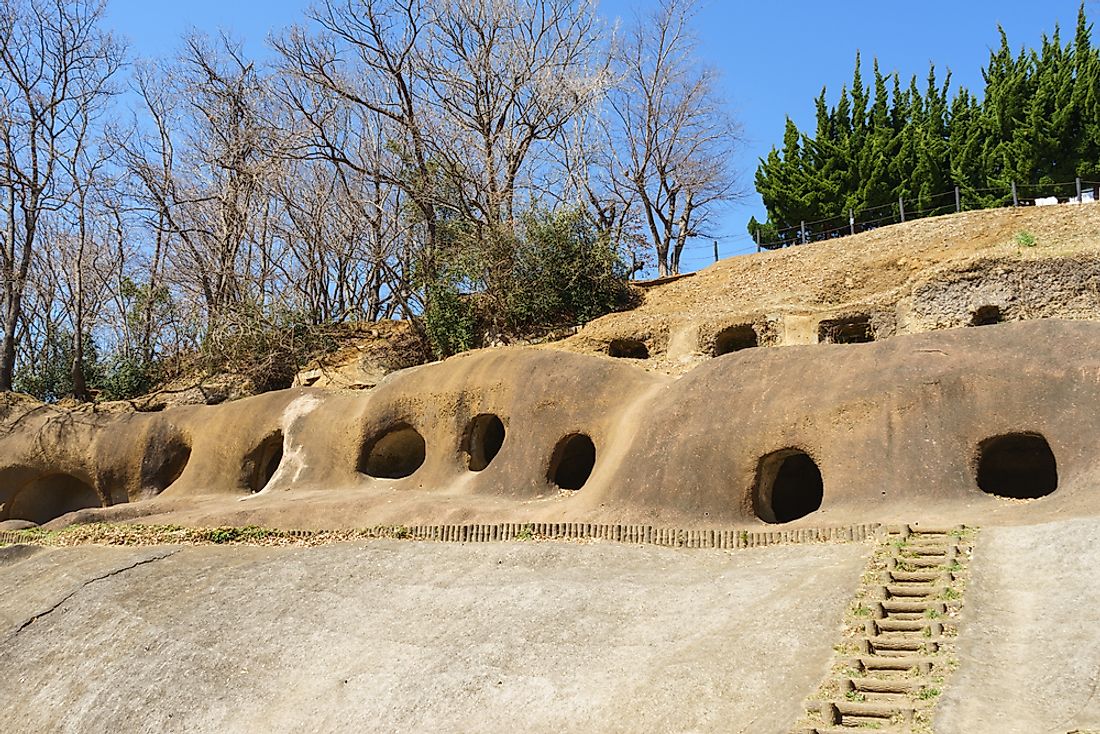What Was the Kofun Period?

The Kofun period refers to a historical era of Japan dated from around 250 to 538 AD following the Yayoi period. The period is characterized by the construction of large burial or tomb mounds. The Kofun era is usually divided into two phases which are the early 4th century and the late 5th and 6th centuries. The Kofun period together with its succeeding Asuka period is often collectively known as the Yamato period which was an era before the introduction of Buddhism. In the recorded history of Japan, the Kofun period is the earliest era. However, the chronology of the period's historical sources is unclear, and therefore its study requires the help of archeology and intentional criticism.
Kofun Society
The Kofun period was marked by the emergence of the Yamato court which was a chieftainship that rose to prominence becoming the ruling imperial dynasty. The Yamato court ruled over a significant portion of the Kyushu and Honshu. There was an increased influx of immigrants from both Korea and China, most of whom were forefathers of the prominent Japanese clans. The introduction of Buddhism into Japan in 538 AD is considered the beginning of the Asuka era which was the next historical period.
What is a Kofun Tomb?
A Kofun is a large tomb of mounded earth mainly constructed for the deceased members of the ruling elite who existed between the 4th and 7th centuries. Kofun range in size, from a few feet to over 1,300 feet long. The Kofun tombs are the greatest source of information on the political, social, and cultural organization of the Kofun period. The Kofun tombs are built in many shapes, but the square and round shapes were the most commonly used. Haniwa were pottery figures often buried beneath the Kofun's circumference.
Early Kofun Tombs
The emergence of mound burials towards the end of the 3rd century in Japan was so sudden that early archaeologists believe the tombs emulated influence or conquest from outside the archipelago. Hokenoyama Kofun is thought to be the oldest Japanese Kofun situated in Sakurai, Nara dating back to the late 3rd century. Later on, keyhole Kofuns such as the Shibuya Mukaiyama and the Hashihaka Kofuns were constructed during the 4th century. The keyhole Kofun trend first dispersed from Yamato to Kawachi before spreading throughout the entire nation during the 5th century except for the Tōhoku region. However, the style of keyhole Kofun died out in the late 6th century. The disappearance of the keyhole Kofun might be attributed to the radical transformation of the region which occurred in the Yamato court including the introduction of Buddhism as recorded in Nihon Shoki. The last two enormous Kofun include the Imashirozuka Kofun with a length of 623 feet located in Osaka. Current scholars believe that the tomb belonged to Emperor Keitai. The other great Kofun is Iwatowama kofun located in Fukuoka whose length is 443 feet. The tomb belongs to Iwai as recorded in Fudoki of Chikugo; Iwai was believed to be Keitai's political archrival.
Yamato Court
The actual establishment of the Yamato rule is contested due to the existing controversy over Yamataikoku. However, Yamato court is believed to have been established around 250 CE. Despite the dispute, it is agreed that Yamato rulers predominated the region until the 4th century and maintained the keyhole Kofun culture. The Yamato clans started holding dominance over the southern half of Japan during the 6th century. However, according to the Book of Song, the relationship between Yamato and China is believed to have started in the late 4th century.











